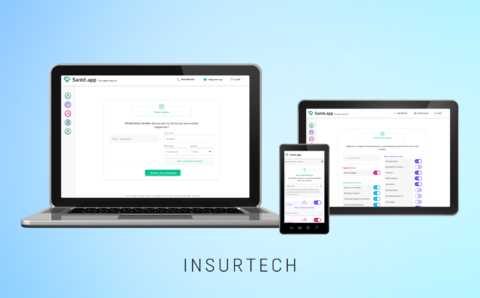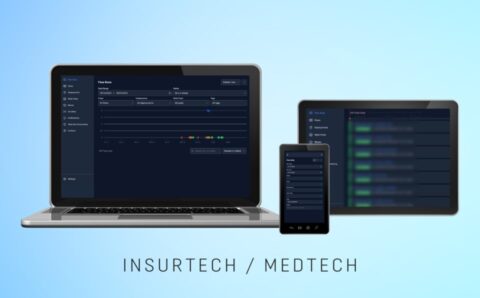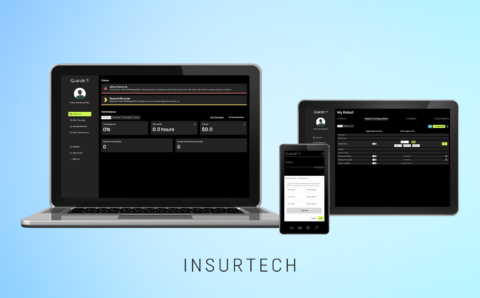
The insurance domain, in the past defined by paper-based processes and manual interactions and now modified by digital transformation, has obtained enhanced automation, raised efficiency, and improved customer satisfaction. Innovative technologies continue the transformation of how insurance companies achieve substantial improvements in their services and operations. To illustrate, McKinsey suggests that AI technologies have the potential to contribute as much as $1.1 trillion in annual value to the global insurance sector, with roughly $400 billion obtained from enhancements in pricing, underwriting, and promotional technology, and an additional $300 billion from AI-driven customer service and tailored offerings.
Technological advancements continue to evolve, delivering innovations like AI and Blockchain, expanding the possibilities of insurance companies. These technologies not only offer opportunities to grow operational efficiency but also help insurers deliver more personalized, data-driven services to their customers. Of those respondents who had previously bought an insurance product, 66% reported having prior experience purchasing insurance through online channels, which accelerates the digital transformation, according to Deloitte.
Let’s uncover the critical trends of the insurance digital transformation. They are worth being aware of, continuing to redefine how insurers engage and retain their clients, streamline industry procedures, and remain competitive in the insurance sector.
Table of Contents:
Customer-Centricity
Customer-centricity appears to be a core trend, making insurers increasingly focus on enhancing customer satisfaction and engagement through various digital means and channels. Digital transformation services for insurance can significantly help deliver more client-oriented services and individual approaches.
Personalized Insurance Offerings
Insurers leverage data analytics and AI to tailor insurance services to individual customer demands, obtain efficiency gains, improve customer engagement, and new strategic opportunities. This personalization allows for more accurate risk assessment and pricing, ensuring customers get coverage that aligns precisely with their requirements. Showcasing this technology, Anthem Inc. partnered with Google Cloud to develop a synthetic data platform. This AI-based platform aims to enhance the health insurance company’s ability to identify fraudulent activities and provide personalized care to its members through analyzing medical histories, and healthcare claims.
Unlock the Power of Digital Transformation
Discover the 7 key benefits of going digital and how it can revolutionize your insurance business.
Enhanced Customer Experiences through Digital Channels
Digital transformation for insurance essentially involves implementing user-friendly web apps that simplify complex insurance-related tasks and provide improved efficiency, accessibility, and user satisfaction. In practice, they incorporate the functionality that allows the optimization of such flows as policy management, file claims, and customer information access. In addition, the direction towards web-based self-service delivers solid assistance to policyholders and ensures more positive client experiences.
Real-Time Communication and Support
Quick and convenient communication via chatbots, virtual assistants, and social media ensures customers receive quick responses to queries and support requests. Real-time engagement refines overall satisfaction and helps address concerns faster while also reducing the need for human assistance engagement. Due to these values, the market for insurance chatbots reached a valuation of $467.4 million in 2022 and is anticipated to achieve $4.5 billion by 2032, with a compound annual growth rate (CAGR) of 25.6% expected during the period from 2023 to 2032, as AlliedMarketResearch claims.
Decentralized Architectures
Often powered by blockchain technology, decentralized architectures bring a wide range of crucial benefits to the insurance industry’s digital transformation strategy. Decentralized architectures may be showcased on the adoption of decentralized identity management systems, smart contracts, and decentralized applications (DApps) for insurance-related functions.
Improved Data Security
Decentralization reduces the risk of data breaches and fraud by distributing data across the whole network. This is achieved by eliminating single points of failure; since data is distributed across the entire network, there is no central repository that, if compromised, would expose all sensitive information. Such a solution enhances the security and integrity of sensitive customer information and policy records, ultimately increasing stakeholder trust.
Streamlined Processes
Smart contracts, an integral solution of decentralized architectures, are self-executing, programmable agreements that run on a blockchain. They can automate and streamline various insurance processes, such as claims processing and underwriting. With it, insurance businesses achieve decreased administrative expenses and faster, optimized transactions. That is why the market for Smart Contracts was valued at USD 190.34 Million in 2022, and it is projected to reach USD 1077.7 Million by 2030, with a compound annual growth rate (CAGR) of 24.2% anticipated during the forecast period from 2023 to 2030, according to SNS Insider.
Enhanced Transparency
Blockchain’s unmodifiable records ensure a transparent and auditable ledger of all insurance transactions. Policyholders and regulators can access and verify data, such as insurance policies, claims histories, premium payments, and underwriting information, which results in increased transparency and accountability. In practice, data verification can happen via blockchain technology, which provides high transparency of transactions, ensuring the integrity and accuracy of information within the insurance industry.
Trust and Collaboration
The adoption of decentralized architectures provides trust among insurers, reinsurers, and other industry-engaged parties through powerful algorithms. Blockchain-based mechanisms like Proof of Work (PoW) or Proof of Stake (PoS), enable participants in the network to collectively validate and record transactions securely. These algorithms help validate transactions, ensuring that only legitimate and verified data is added to the blockchain. The credibility is vital to finding innovative collaborations, further accelerating digital transformation efforts, and creating a cohesive, transparent insurance ecosystem.
Can’t define the tech stack for your insurtech project? Write us to get a free consultation!
Cloud Computing
Cloud solutions are significantly enhancing the way insurers manage data, deliver services, and enhance scalability. Cloud-based infrastructure ensures secure and flexible storage options, facilitating efficient data processing and analytics, with the ability to adapt to changing customer demands and market condition
Scalability and Flexibility
Cloud infrastructure allows insurers to scale their operations up or down swiftly, catering to dynamic demands. It is possible by getting on-demand access to computing resources, enabling them to adjust the capacity and resources easily in response to changing demands without the need for significant upfront investments in hardware or infrastructure. This refers to capacities like data storage, processing power, or customer service resources. The flexibility is an ultimate benefit, which drives the software’s solidity and cost-efficiency.
Data Accessibility and Analysis
Through the use of cloud-based data warehouses and analytics tools, insurers can achieve advanced risk assessment, deliver personalized offerings, and make more decisions based on the assembled and examined data. To illustrate, by employing cloud-based data warehouses and analytics tools, insurers can examine a customer’s historical driving behavior and accident records to personalize auto insurance premiums and coverage options, offering safer drivers more favorable rates and tailored policies.
Collaboration and Mobility
Cloud technology establishes seamless connections among teams and supports remote work capabilities for insurance businesses, by providing a centralized and easily accessible platform where data and applications are hosted and can be accessed remotely. This makes such a type of infrastructure beneficial for both external and internal processes. Insurers can operate more efficiently, even in distributed work environments, with absolute data security and compliance.
Disaster Recovery and Resilience
Opting for cloud services, you obtain robust disaster recovery solutions, ensuring business continuity and failure resistance even in the face of unforeseen disruptions, such as fraudulent activities or other cyberattacks. The cloud allows for rapid data recovery from the backups, ensuring stable solution performance and failure resistance as data can be restored quickly and efficiently, minimizing downtime and data loss. For instance, many cloud providers offer advanced security features and tracking to detect and respond to cyber threats, further enhancing resilience against such disruptions.
Remote Workforce
The remote environment serves as a significant driver of digital transformation in the insurance industry, impacting the way businesses perform internally. This is because it necessitates the adoption of digital tools and processes to facilitate remote work, communication, and collaboration, helping insurers to modernize their operations for greater efficiency and flexibility.
Virtual Collaboration and Communication
The shift to remote work has accelerated the adoption of digital collaboration tools, enabling insurance professionals to communicate, collaborate, and share information seamlessly across regional boundaries. In practice, 79% of respondents stated using collaboration tools for work in 2021. This is a rise of 44% in comparison to the 2019 figure, according to Statista.
Enhanced Flexibility
Remote work provides insurers with the flexibility to explore and access a global talent pool by erasing location boundaries and allowing them to hire specialists with solid expertise from different regions and time zones. Thus, you are able to recruit specialized skills and expertise, enhancing the industry’s overall capabilities.
Digital Training and Skill Development
Online training and upskilling programs are important to ensure remote workers have the necessary knowledge and resource base to bring the company to the next level. They play a critical role in sustaining engagement, elevating an internal pool of talent, and preserving high-performing employees.
Increased Cybersecurity Focus
With remote work, there’s an increased orientation on cybersecurity to protect sensitive customer data, related to using personal devices to connect to corporate networks and systems. It’s vital to maintain regulatory compliance to allow your business to operate legally and save it from fines and legal issues due to data leaks.
Efficiency and Cost Savings
Remote work can save costs through reduced office space requirements and increased efficiency through streamlined processes and digital automation. On-site work environment maintenance requires increased expenses, due to the physical infrastructure, utilities, and facilities management, among other factors. Meanwhile, remote work offers less investment, enhanced flexibility, and remaining efficiency for the insurance business.

Santé.app
We developed Santé.app to streamline health insurance choices, using surveys to match users with the best insurance offers based on their needs.

AI Platform
Our AI platform transforms healthcare admin tasks with machine learning, enhancing efficiency & service quality in European medical institutions.

Robot Factory
Robot Factory provides insurance help brokers to automate processes, manage documents, boost productivity with minimal manual effort.
Personal Health Tech Integration
The integration of personal health technologies (such as wearable devices, fitness mobile apps, and telemedicine platforms) is one of the aspects that solidly impact the insurance industry, offering swift and convenient solutions to policy pricing and claims processing.
Wearables and Health Data for Policy Pricing
Insurers are actively extracting and leveraging data generated from wearables like fitness trackers and smartwatches to assess policyholders’ health and lifestyle habits more accurately. For instance, a company may offer discounted premiums to policyholders who meet certain fitness goals tracked by their wearable devices, thereby encouraging healthier lifestyles and potentially reducing insurance claims, while also extracting valuable data. This approach is beneficial due to a more precise risk assessment, delivering personalized policy pricing, and motivating policyholders to maintain healthier lifestyles.
Promoting Wellness and Prevention through Technology
Insurance companies can promote a healthy way of living among policyholders. It can be realized by encouraging wellness behaviors tracked through the handiness of web apps and wearables. To engage customers, insurers can suggest individual discounts, rewards, or access to wellness programs, ultimately increasing a healthier customer base.
Enhanced Claims Processing with Health Data
Integrating health data into claims processing can streamline the assessment of policyholders’ medical conditions and treatment history. The benefits delivered by this are quicker and more accurate claims settlements, reduced administrative outgoings, and higher customer satisfaction.
Environmental and Climate Risk Assessment
As environmental concerns and climate change accelerate, the insurance industry is turning to digital transformation to understand better and manage associated risks.
Integrating Climate Data into Underwriting
Insurers employ digital tools and data analytics to incorporate climate-related data into their underwriting processes to accurately assess risks referred to climate events and tailor insurance coverage accordingly. Data analytical solutions may relate to Business Intelligence (BI) platforms, data warehousing solutions, and more.
Sustainable Insurance Products and Incentives
Digital transformation involves the development of sustainable insurance products that inspire policyholders to adopt eco-friendly practices. In fact, according to TheRoundUp.org, 78% of customers consider sustainability vital. These products often provide coverage for sustainable infrastructure projects.
Managing Climate-Related Claims and Risks
AI and predictive analytics efficiently assist insurers in projecting and managing climate-related claims and risks. The employment of such technologies allows for quicker response to policyholder needs during weather-related disasters by automating claims processing, assessing damage remotely, and providing real-time insights for resource allocation and customer support.
Globalization and Expansion in Insurance Digital Transformation
Globalization and expansion are the greatly important trends of insurance digital transformation, defining business expansion and client catering worldwide.
Digital Platforms for International Expansion
Insurers can leverage digital web platforms and technologies to expand their presence globally. Web software is a relevant solution, as there are more than 5.3 billion Internet users, up from 4.9 billion in the previous year globally, according to Statista. to enable insurers to reach the highest market efficiently, ensure convenient access, streamline operations, and adapt products to meet diverse customer needs all around the world.
Addressing Regulatory Challenges in Multiple Markets
Expanding internationally brings the challenge of navigating varied regulatory challenges. Regulatory compliance software integration and AI-driven risk assessment, are helping insurers manage compliance efficiently.
Offering Global Coverage and Services
Some insurers offer comprehensive global coverage and services to cater to multinational clients. Here, tech solutions facilitate policy issuance, claims processing, and risk assessment on an international level, ensuring seamless customer experiences, which is a must to expand the business worldwide.
Peer-to-Peer Insurance in Insurance Digital Transformation
Peer-to-peer (P2P) insurance is a collaborative insurance model where individuals or small groups come together to pool their resources and share the risk among themselves. It is one of the other vital digital transformation trends in insurance, which involves leveraging community-based models and decentralized trust networks.
Community-Based Insurance Models
P2P insurance relies on communities or policyholders pooling resources to cover each other’s risks. Such models increase a sense of trust and shared responsibility among members. Members understand that their contributions directly benefit others in the community, creating a mutual sense of accountability and cooperation that establishes trust within the P2P insurance network.
Decentralized Trust Networks in Insurance
Blockchain technology is often engaged in P2P insurance to create transparent, tamper-secured records of transactions and claims. The decentralized strategy minimizes the need for intermediaries and enhances reliability among participants.
Advantages include lower premiums, increased transparency, and a more customer-centric approach. Whereas its challenges imply the need for critical mass to spread risk, potential moral hazard issues, and regulatory burdens.
Advanced Analytics and Big Data
The integration of advanced analytics and big data is an indispensable theme to know when it comes to the insurance industry’s digital transformation journey, controlling several critical aspects. As SumDU Repository claims, leveraging big data helps insurers recognize patterns, trends, and behaviors, facilitating the creation of tailored products and services.
Data-Driven Decision-Making
Insurers are harnessing the power of big data and analytics to make informed decisions. Analyzing vast datasets helps underwriting, claims processing, and investment management, leading to more accurate risk assessment and optimized operations.
Predictive Analytics for Risk Assessment
Using predictive analytics models, insurance companies can anticipate risks more precisely by forecasting potential future events or losses with greater accuracy, taking timely measures to mitigate or prepare for these risks before they occur. This proactive approach enables insurers to tailor policies and pricing, ultimately reducing losses and enhancing profitability.
Customer Behavior Analysis for Tailored Services
Understanding customer behavior through data analytics is pivotal in offering personalized insurance products and services. Insurers can craft custom-tailored policies, improve customer experiences, and boost customer retention by responding to individual preferences and needs.
Write us and get your insurance business to the next level!
Artificial Intelligence (AI) and Machine Learning
Artificial Intelligence (AI) and Machine Learning (ML) are some of the most significant advancements and digital transformation trends in insurance, impacting various sectors.
Chatbots and Virtual Assistants for Customer Service
AI-driven chatbots and virtual assistants are the core solutions to enhance customer service. They provide 24/7 support, answer inquiries, assist with policy management, and enhance customer experiences by delivering quick, personalized responses.
Automated Underwriting and Claims Processing
AI and ML algorithms enable automated underwriting processes, expediting policy issuance and enhancing accuracy. Moreover, claims processing benefits from automation, resulting in faster settlements.
Fraud Detection and Prevention with AI
AI-powered fraud detection models analyze vast datasets to identify suspicious patterns and behaviors. As an insurer, you can prevent fraudulent claims, protecting your company and policyholders.
Ready to Transform Your Insurance Services?
Our insurtech experts are ready to help you implement digital solutions and achieve your business goals.
Internet of Things (IoT) and Telematics
The Internet of Things (IoT) and telematics are offering transformative changes in the insurance industry, offering innovative solutions to enhance a row of aspects.
Usage-Based Insurance Models
IoT-enabled devices are a massive part of usage-based insurance (UBI) models. These devices track and monitor policyholders’ behavior, such as driving habits or home security, and adjust premiums based on real-time data. This helps deliver a highly personalized approach, achieving safer practices and customer cost savings.
IoT Devices for Risk Mitigation and Prevention
So far, insurers have mainly used IoT capabilities to aid interactions with customers and to accelerate and simplify underwriting and claims processing.
IoT devices provide access to immediate risk assessments, more efficient claims handling, efficiently migrated risks, and tailored offerings for individuals. Showcases incorporate smart home sensors to prevent water damage or vehicle telematics to encourage safer driving behaviors. By avoiding losses, insurers reduce claims payouts and raise profitability.
Data-Driven Insights from Connected Devices
Interconnected devices generate vast loads of data, which insurers leverage to gain valuable insights into customer behavior and risk factors. Such gadgets in the insurance industry can incorporate telematics devices installed in cars to monitor driving behavior, smart home devices that track home security and safety, and wearable devices that collect health and lifestyle data. This information facilitates wiser and more informed decisions, product innovation, and targeted marketing efforts.
Blockchain Technology
Blockchain technology disrupts the insurance industry by offering enhanced transparency, trust, and efficiency in various critical areas.
Improved Transparency and Trust in Insurance Transactions
Blockchain ensures a decentralized and unchangeable ledger for highly transparent records of insurance transactions. This increased transparency fosters trust among insurers, policyholders, and regulators, reducing disputes and enhancing accountability.
Smart Contracts for Claims Processing Efficiency
Smart contracts, in contrast to traditional arrangements, which rely on human intermediaries to enforce terms and conditions, smart contracts automate contract execution based on predefined rules and requirements. These self-executing contracts trigger claims payouts automatically when priorly determined conditions are fulfilled, saving operational costs, eliminating delays, and enhancing customer satisfaction.
Reducing Fraud Through Immutable Ledgers
Blockchain’s secure and immutable concept makes it a potent tool for fraud detection and prevention. Insurers can use blockchain to verify the authenticity of policies, claims, and customer information, thereby reducing fraudulent activities within the industry.
“Blockchain is a technology which is all about providing guarantees about process integrity. If a process is run on a blockchain, the process is guaranteed to run according to some pre-agreed code and provide the correct output. No one can prevent the execution, no one can tamper with the execution, and no one can censor and block any users’ inputs from being processed.”
Vitaly Buterin, Co-founder of Ethereum
Insurtech Startups and Collaboration
The emergence of Insurtech startups and collaboration with traditional insurers is a transformative force in the insurance industry.
The Rise of Insurtech Disruptors
Insurtech startups leverage technology, data analytics, and innovative business models to disrupt traditional insurance paradigms. They introduce new products, enhance customer experiences, and challenge incumbents by offering agility and customer-centric solutions.
Partnerships between Traditional Insurers and Insurtech Firms
Traditional insurers are partnering with Insurtech firms to harness their technological advancement. These collaborations among insurance and tech vendors often result in the introduction of digital capabilities, streamlined processes, and the adoption of cutting-edge tools to improve underwriting, claims processing, and customer engagement. For instance, IBM partnered with MetLife, one of the global largest insurance companies, to implement a platform based on IBM Cloud to enhance the efficiency of product development and underwriting in the insurance industry.
Fostering Innovation through Collaboration
Collaboration between insurtech companies and other industry parties, like regulatory bodies, financial institutions, and other stakeholders, fosters innovation across the discussed domain. It facilitates the exploration of a broad spectrum of ideas, accelerates the development of emerging technologies, and addresses evolving customer demands more effectively.
Cybersecurity and Data Privacy
In the sector that handles sensitive data, cybersecurity, and data privacy have become the primary concerns to take care of. According to Sprinto, between March 2021 and February 2022, there were data breaches that caused the exposure of at least 42 million records. In the US, roughly 817 data breaches were reported from the first half of 2022 onwards, with stolen or compromised credentials accounting for 9% of these breaches, with an average associated cost of $4.50 million. This is the main reason to make them a 2023 trend for insurance transformation.
Protecting Sensitive Customer Data
Insurers are increasing efforts to protect sensitive customer information powerfully. Encryption, access controls, and robust authentication mechanisms are implemented to mitigate data breaches and protect against cyber threats.
Cybersecurity Measures for Digital Insurance Platforms
Digital insurance platforms equipped with comprehensive cybersecurity measures like regular vulnerability assessments, intrusion detection mechanisms, and incident response plans are in place to ensure the security of digital services and data.
Automation and Robotics
Automation is a core solution to make use of digital transformation that has the potential to increase insurance business productivity measurably.
Robotic Process Automation (RPA) for Administrative Tasks
RPA technologies are being deployed to automate routine, time-consuming administrative tasks such as data entry, document processing, and policy administration. This not only reduces human error but also frees up manual efforts to focus on more complex, significant activities.
Claims Assessment and Processing with Automation
Automation tools are streamlining the claims assessment and processing procedures. Insurers employ AI-driven algorithms to evaluate claims, verify data, and even facilitate damage assessment. These opportunities enable expediting claims settlements and also enhance accuracy.
Improving Efficiency and Reducing Costs
By automating various processes, insurers can significantly improve operational efficiency. Automation reduces manual labor, accelerates decision-making, and ultimately leads to cost savings, which can be passed on to customers through competitive pricing.
Mobile Apps and Self-Service Portals
Mobile apps and self-service portals have drastically changed how insurance companies interact with their customers, bringing convenience and efficiency to the forefront of the industry’s digital transformation.
Policy Management on Mobile Devices
Insurance companies now offer mobile apps that empower policyholders to manage their policies conveniently. From procedures like accessing policy documents to updating personal information, these apps provide a seamless and user-friendly experience.
Self-Service Portals for Customer Convenience
Self-service portals, accessible via the web, allow customers to handle various tasks independently. This includes making premium payments, generating insurance certificates, and requesting policy changes without agent intervention.
Mobile-Based Claims Reporting and Tracking
Customers can report and track claims via mobile apps, streamlining the claims process and reducing the time it takes to settle a claim. This digital approach enhances customer satisfaction by providing real-time updates on claim status conveniently and effortlessly.
Augmented Reality (AR) and Virtual Reality (VR)
Augmented Reality (AR) and Virtual Reality (VR) are emerging as transformative technologies in the insurance industry, influencing various aspects of the businesses’ performance.
Virtual Property Inspections and Claims Assessment
AR and VR technologies enable insurers to conduct virtual property inspections and assess claims remotely. This not only speeds up the claims process but also reduces the need for physical site visits, enhancing efficiency and cost-effectiveness.
Enhancing Customer Engagement through AR and VR
Insurers are utilizing AR and VR to create immersive experiences for customers. Virtual showrooms, property walkthroughs, and interactive policy explanations enhance customer engagement and facilitate informed decision-making.
Training and Onboarding with Immersive Experiences
Such powerful technologies serve as valuable tools for training and onboarding insurance professionals. These immersive experiences simulate real-world scenarios, allowing employees to develop skills and knowledge in a safe and controlled environment.
Regulatory Changes and Compliance
Adhering to evolving regulatory frameworks is a critical aspect of the insurance industry, bringing several key considerations.
Adapting to Evolving Insurance Regulations
Insurance regulations are continually evolving to address emerging risks, consumer protection, and technological advancements. Insurers must remain agile and proactive in adapting their operations and products to stay compliant.
Ensuring Data Protection and Security Compliance
Data privacy and security regulations, such as GDPR and CCPA, demand stringent measures to safeguard customer data. Compliance requires robust data protection strategies, secure storage, and meticulous handling of sensitive information.
Navigating the Legal Implications of Digital Transformation
While the adoption of digital technologies delivers a broad variety of benefits, it also requires compliance with industry regulations. This implies covering contractual obligations, liability, and intellectual property rights. In this case, insurers must partner with legal experts to navigate these challenges and ensure their digital services align with the law.
Data Ethics and Responsible AI
The principles of data ethics and responsible AI are obligatory to follow in the digital transformation of the insurance niche, and here’s what you should consider.
Ethical Considerations in Data Usage
Every insurance business is increasingly aware of the ethical implications of data collection and usage. The companies must strike a delicate balance between leveraging data for risk assessment and protecting individuals’ privacy and rights. Ensuring consent and data protection is crucial.
Ensuring Fairness and Transparency in AI Algorithms
Fairness and transparency are essential when deploying AI algorithms in underwriting, claims processing, and customer service. Due to this fact, insurance companies keep working to eliminate algorithm biases to prevent discrimination and promote fairness.
Building Trust with Customers through Responsible AI Practices
Building and maintaining customer trust is genuinely significant, which empowers insurers to invest in responsible AI practices, such as explaining how decisions are made, providing avenues for recourse, and being transparent about data handling. All these procedures help reassure customers about the ethical use of their data.
The insurance industry is experiencing a profound digital transformation driven by these key trends, which will remain relevant in 2024 as well. Embracing these tendencies is imperative for insurance companies to stay competitive and in-demanded within the evolving landscape.
Insurance companies should employ the technologies and up-to-date approaches to enhance customer experiences, streamline operations, mitigate risks, and grow innovation. Adapting to these changes ensures survival and positions insurers for sustainable growth and success in the digital market.
Ensure Growth for your insurance business!

